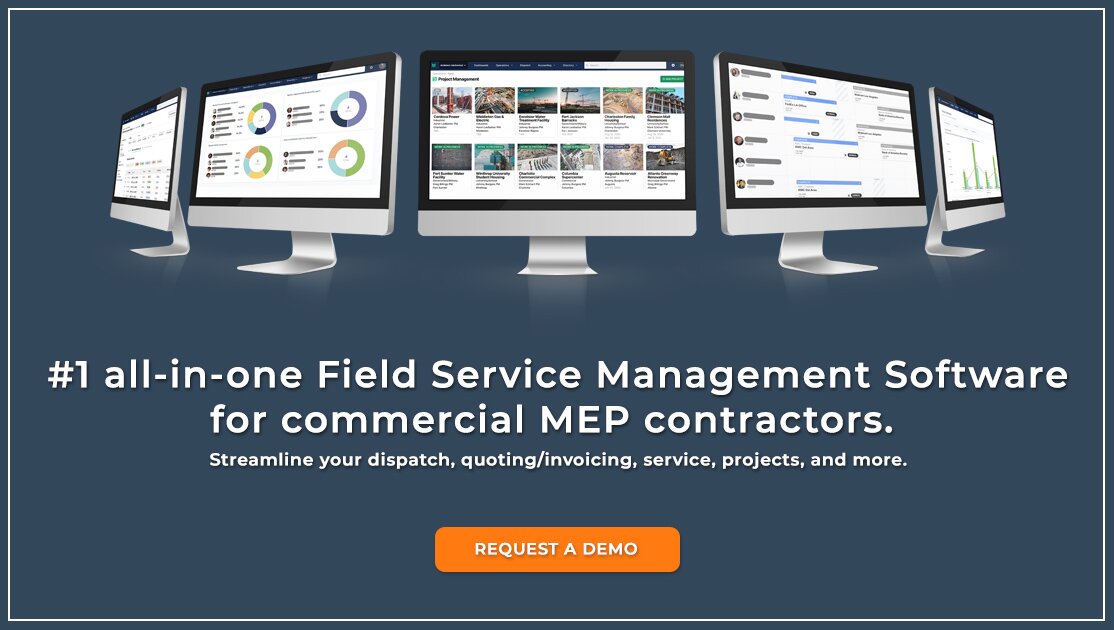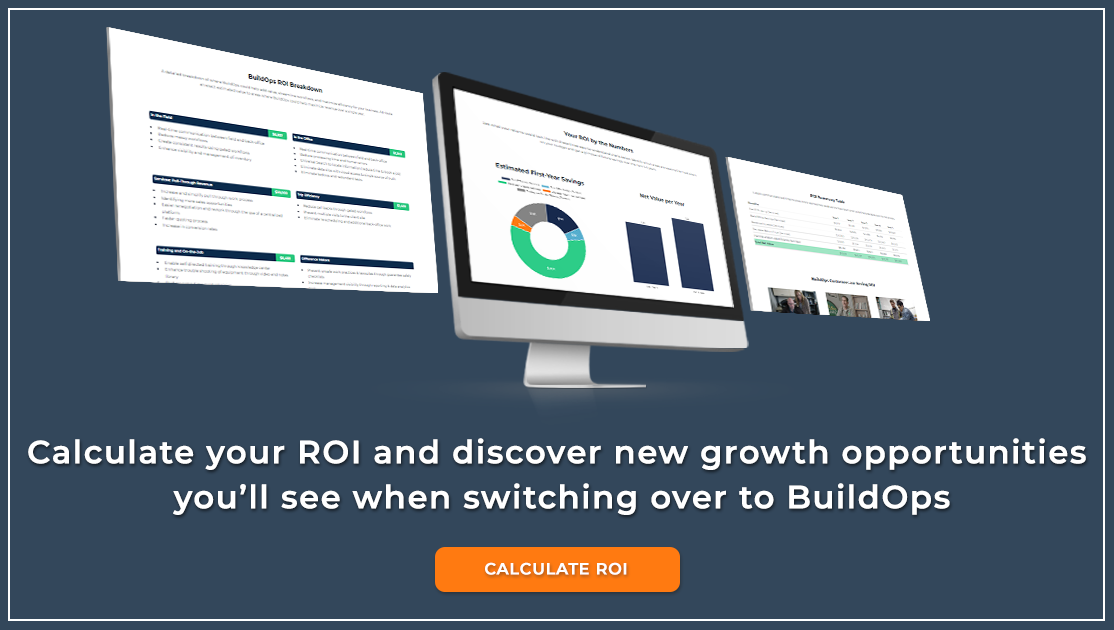Construction Estimating and Accounting Software is a specialized software solution designed to help contractors track their costs, manage construction projects, and improve the accuracy of their estimates. It allows contractors to quickly analyze data from multiple sources, create detailed estimates for upcoming projects, generate accurate invoices, and keep reports on all current jobs. The software helps reduce manual labor associated with constructing estimates through automatic calculations that provide an accurate cost breakdown for each job. Additionally, it can help streamline the accounting process by automatically tracking payments and expenses, providing a centralized location where all financial information related to the project can be accessed. This type of software helps contractors stay organized and efficient when managing construction projects, saving them time and money in the long run.
By using Construction Estimating and Accounting Software, contractors can ensure that their estimates are accurate and cost-effective. This type of software also helps prevent errors from occurring, since it automates the estimation process. Additionally, with its features like job tracking, reporting tools, and invoice generation capabilities, contractors have access to all the data they need in one organized place. By staying on top of their costs and monitoring project progress, contractors can save money while delivering high-quality projects on time and within budget.
What are the key features of Construction Estimating and Accounting Software?
Construction Estimating and Accounting Software offers a variety of features that help contractors manage their projects. These include:
• Automated Cost Analysis – This feature allows users to quickly analyze data from multiple sources in order to accurately estimate project costs.
• Job Tracking – This feature provides an overview of the progress made on each job, allowing contractors to easily monitor what has been completed and what still needs to be done.
• Reporting Tools – Provides graphical charts and reports so that users can easily track expenses, revenues, profits, and other financial information related to a construction project.
• Invoice Generation – Automatically prepares invoices for payment by customers.
• Budgeting & Forecasting – Helps contractors create budgets and forecasts for upcoming projects.
• User/Group Access Management – Allows administrators to set up user roles and manage access rights for team members.
• Document & File Sharing – A secure platform where all documents related to a project can be shared with the entire team.
• Customer Relationship Management (CRM) – Helps contractors maintain customer relationships and track customer data.
• Integration With Accounting Software – Provides seamless integration with accounting software, allowing users to easily manage financial data within the system.
• Advanced Analytics & Reporting – Includes powerful analytics tools that allow users to analyze project costs and performance more effectively.
• Security & Permissions Settings – Ensures that only authorized personnel have access to confidential information.
• Mobile App Support – Allows users to access the system from their mobile devices, allowing them to stay connected while on the go.
Overall, Construction Estimating and Accounting Software is a powerful tool that helps contractors manage projects more efficiently. With its automated cost analysis capabilities, job tracking features, reporting tools, invoice generation features, budgeting & forecasting capabilities, user/group access management settings, document & file sharing platform, customer relationship management (CRM) integration with accounting software, advanced analytics & reporting tools, security & permissions settings and mobile app support – it provides everything a contractor needs to ensure successful project completion.
What are the benefits of using Construction Estimating and Accounting Software?
Construction Estimating and Accounting Software enables contractors to easily track all of their project-related information in one central hub, resulting in improved accuracy and efficiency. This allows them to control costs better by ensuring that estimates are accurate and timely, while also keeping customers informed throughout the project lifecycle.
The software’s automated cost analysis feature helps contractors quickly identify any potential cost overruns or inconsistencies, enabling them to adjust budgets accordingly. Additionally, its job tracking feature provides an overview of what has been completed so far and what still needs to be done, allowing contractors to stay on top of their projects. The reporting tools provide graphical charts and reports for financial data related to a construction project, helping contractors monitor expenses and profits more effectively.
What are the disadvantages of using Construction Estimating and Accounting Software?
The main disadvantage of using Construction Estimating and Accounting Software is the initial setup cost. Installing and configuring the software can be quite costly and time-consuming, which may not be feasible for smaller projects. In addition, due to its complexity, users may require additional training in order to use all of its features effectively.
Furthermore, some users may find the user interface difficult to navigate or have difficulty locating specific information within the system. Finally, data security and privacy are also a major concern as unauthorized personnel could gain access to confidential project information if proper security measures are not put in place.
What are the different types of Construction Estimating and Accounting Software?
The different types of Construction Estimating and Accounting Software include cloud-based systems, desktop software, enterprise level solutions, mobile apps, and web-based applications.
Cloud-Based Systems – These are the most popular type of systems as they allow users to access their information from any device with internet access.
Desktop Software – This type of system is installed on a computer or laptop and requires an internet connection in order to use all of its features effectively. It enables users to store data locally which can improve security but make it more difficult to share information with remote team members.
Enterprise Level Solutions – Suitable for larger companies that require a comprehensive construction project management solution. It offers extensive features such as advanced analytics & reporting, budgeting & forecasting capabilities, invoicing & payments management, customer relationship management (CRM) integration with accounting software, and more.
Mobile Apps – These apps are designed for contractors that need to stay connected on the go. They usually offer basic features such as job tracking, information sharing, document uploads/downloads, and invoicing.
Web-Based Applications – These applications can be accessed via a browser window or mobile device. They are typically less expensive than desktop solutions but offer fewer options when it comes to customization. They often feature collaboration tools such as document & file sharing in order to make project coordination easier.
In conclusion, Construction Estimating and Accounting Software can provide contractors with a number of advantages including increased accuracy and efficiency, cost analysis capabilities, job tracking abilities, and reporting tools. However, it can be expensive to install and maintain as well as difficult to use for those that lack the necessary training or experience. It is important to evaluate which type of system will best suit a contractor’s needs before making any final decisions.
What are the different licensing options for Construction Estimating and Accounting Software?
The different licensing options for Construction Estimating and Accounting Software are subscription-based, perpetual license, and open source.
Subscription-Based – The software is typically leased on a monthly or yearly basis and provides users with access to the latest version of the software. This option is often preferred by contractors that require frequent updates to their programs.
Perpetual License – The user pays a one time fee for the software and owns it indefinitely with no obligation to renew. This type of license can be more cost effective over the long term but may not provide access to all of the newest features or updates available in later versions.
Open Source – Open Source construction estimating and accounting software is free to use. It usually requires more technical knowledge to install and configure than other types of software, but is often the preferred choice for IT professionals or those that prefer to customize their solutions.
In conclusion, the type of licensing option selected will depend on a contractor’s individual requirements. It is important to evaluate which type of license best suits a contractor’s needs before making any final decisions.
What measures can be taken to increase customer satisfaction with Construction Estimating and Accounting Software?
In order to increase customer satisfaction with Construction Estimating and Accounting Software, it is important to provide a user-friendly interface, detailed training and support materials, as well as regular updates and bug fixes. Additionally, contractors should consider providing customized solutions that are tailored to their specific needs in order to ensure the software meets their expectations.
User-Friendly Interface – The software should be designed in such a way that it’s easy for users of all skill levels to navigate. This can save time and improve efficiency when working on projects.
Detailed Training & Support Materials – Providing comprehensive step-by-step instructions or video tutorials can help users understand how the software works quickly. It also ensures they have access to the support they need if any issues arise.
Regular Updates & Bug Fixes – Updating the software on a regular basis can ensure that users are always using the most recent version with all of the latest features as well as minimizing any potential bugs or glitches.
Customized Solutions – If a contractor’s requirements are more complex than what is offered in pre-existing packages, then it may be necessary to create customized solutions for their specific needs. This ensures that the software meets their expectations and provides them with an efficient solution for managing their projects.
In conclusion, taking these measures will help contractors increase customer satisfaction with Construction Estimating and Accounting Software while ensuring optimum efficiency when working on projects.
Are there any restrictions or compliance requirements for Construction Estimating and Accounting Software?
Yes, there are certain restrictions and compliance requirements to consider when using Construction Estimating and Accounting Software. These requirements can vary depending on the jurisdiction in which the software is being used as well as any industry standards or government regulations that must be met.
In some jurisdictions, contractors may need to obtain specific licenses or certifications before being able to use the software. Additionally, if a contractor’s business involves working with sensitive data or protected information, then they may need to meet specific security protocols such as encryption of stored data and two-factor authentication for user accounts.
In terms of industry standards, contractors should make sure that the construction estimating and accounting software they are using is compliant with any applicable standards set by their trade association or industry body. Additionally, they should ensure the software meets any government regulations that are applicable to their jurisdiction.
In conclusion, it is important for contractors to be aware of any restrictions and compliance requirements that apply when using Construction Estimating and Accounting Software in order to ensure they remain compliant with all relevant guidelines.
What is the future or trends for Construction Estimating and Accounting Software?
The future of Construction Estimating and Accounting Software is likely to involve a greater focus on artificial intelligence (AI) and machine learning. AI-based systems can help automate certain processes, such as data entry or project tracking, to increase efficiency and accuracy. Machine learning algorithms can also be used to analyze large amounts of data in order to provide better insights into projects or customer behavior.
Additionally, cloud-based solutions are becoming increasingly popular in the construction industry due to the convenience they offer. Cloud-based software allows contractors to access their information from anywhere with an internet connection, making it much easier for them to manage their business remotely. Finally, there is likely to be an increased focus on user experience when it comes to Construction Estimating and Accounting Software. This involves creating interfaces that are easy to use as well as providing helpful customer support in order to ensure users understand how the software works quickly.
In conclusion, the future of Construction Estimating and Accounting Software is likely to involve a greater emphasis on automation, cloud solutions, and user experience in order to make it easier for contractors to efficiently manage their projects.
What are people saying about Construction Estimating and Accounting Software?
Overall, people seem to be quite pleased with Construction Estimating and Accounting Software. Many users have praised the software for its ability to streamline their processes, increase their efficiency, and save them time. Others have noted that the customer support is helpful in providing answers to any questions they may have regarding the use of the software.
Additionally, many users have highlighted how easy it is to use the software, as well as its intuitive interfaces which make it easy for them to understand how it works quickly. Finally, some users have commented on how reliable the software is when used for managing projects.
In conclusion, people generally seem pleased with Construction Estimating and Accounting Software due to its ease-of-use, helpful customer support, and reliable performance when managing projects.
Overall, it appears that Construction Estimating and Accounting Software is well-liked by users due to its efficiency in streamlining processes, ease-of-use, reliable performance, and helpful customer support. Therefore, contractors can be confident that they will be able to take advantage of all the benefits this type of software has to offer.




